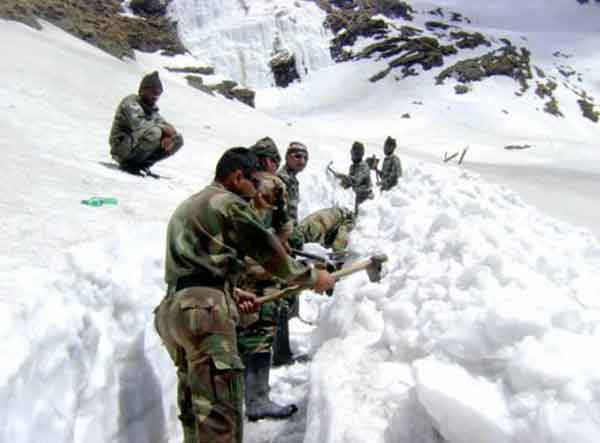
In 1992, a remark by the then Army Chief, General SF Rodrigues that ‘good governance was as much the business of army!’ was deliberately picked up by a journalist to defame him. The late journalist had a personal/family grudge and scores to settle. The resultant furore saw a debate in the parliament and a rap on the knuckles of the Army Chief by the then government. This hyper sensitivity of a political party to any initiative by the armed forces that smacked of political influence was a hangover of the freedom struggle (wherein the army was seen as the tool of the British) and post-independence fear of military takeover. Such was the effect of this fear that a military hero like late Filed Marshal SFHJ Manekshaw was repeatedly insulted and hounded by agencies. Luckily for the country, much water has flowed down the Ganga and today the ruling dispensation is much more relaxed on this issue. This has created much needed synergy in the defence policies and conduct of diplomacy. However the potential of the armed forces in nation building remains underutilized.
The reluctance of the army for any participation in nation building activity is due to the effect of the historical hangover of ‘Operation Amar’ carried out by the 4th Red Eagle Division and its subsequent rout in the battle against Chinese in 1962. The first-ever Param Vishisht Seva Medal of the Indian Army was awarded to Lt Gen B M Kaul in 1960, notably for the successful completion of Operation Amar – the construction of 1,450 barracks/family quarters for troops in Ambala – which was inaugurated by the Prime Minister on August 20, 1958. This project was the brainchild of the Defence Minister VK Krishna Menon. To save on cost, the project entailed using troops as labour for the construction. Gen Thimayya, the Chief of Army Staff, was opposed to the project, but during his absence for a visit to the USA, Maj Gen B M Kaul, then General Officer Commanding (GOC) of 4 Infantry Division at Ambala, directly approached the Defence Minister and got the necessary approvals. The famous Red Eagle division rose to the occasion under his dynamic command and successfully completed the projected in a record seven months.
In end 1959, 4 Infantry Division was despatched to NEFA. Lt Gen B M Kaul, having earned his PVSM, was now the Quarter Master General responsible for housing of the army. War clouds were looming, but the General was still obsessed with his pet projects. Rather than staying in tents and focusing on preparing defences, the ever-efficient 4 Infantry Division was tasked to construct bashas (temporary mud and tin-roofed accommodation) under Operation Amar 2. Representations were brushed aside and construction began on a war-footing. Operation Amar 2 was inaugurated by none other than the Prime Minister on April 14, 1960.
In the early 1960s, the unit lines, messes and bungalows were also used for ‘grow more food’ campaign to grow wheat and other crops. It was a common sight in Meerut Cantonment to see troops engaged in farming. Bullocks and ploughs had been bought from regimental funds and old Persian wells had been reactivated. A still older method of drawing water out of conventional wells using a buffalo hide as a water bag and pulled by bullocks or male buffaloes, was also put to use.
In the Indian Army folk lore, the 1962 military disaster has been linked to these efforts of using army for non-military purposes. This author has studied the 1962 Sino-Indian conflict in great details as part of the ministry of defence project. The main reason for 1962 disaster in North East Frontier Agency NEFA (now state of Arunachal Pradesh) was the strategic blunder of believing that ‘China will never attack’ and tactical blunders IV corps sector. The link to Op Amar was at best a tenuous one.
Another major change that has come about since 1998 overt nuclearisation is that in place of conventional arms based deterrence, we have moved to nuclear weapons based deterrence. The possibility of WWII style or 1971 style full-fledged conventional conflict is the least likely scenario. In addition ‘un conventional’ threats like terrorism, water stress and environmental degradation have emerged as a serious threat to wellbeing and even survival of the nation.
Army as the second largest repository of trained manpower and also the largest land holder in the country, has both the opportunity as well as duty to contribute. Due to peculiar geography of our borders, 70 % of our army is deployed in mountainous areas. These are ideal for water conservation projects.
The army must immediately enforce water harvesting at all its buildings in cantonments. In border areas, units must create small water bodies where ever possible. The army engineers must offer technical advice and help with its earth moving machinery.
The second measure that should be implemented is garbage segregation in all cantonments and composting / vermi-culture at unit levels. All cantonments must also impose plastic ban.
These three four measures are easy to enforce and will yield immediate results. But on a longer term basis, army must determine what percentage of its engineer resources should be diverted for completion of irrigation projects without jeopardizing operational preparedness.
The cantonments that are spread all over the country can then serve as a model to the civil areas nearby. In addition, since most of the army’s manpower comes from rural areas, the soldiers can learn these techniques and implement them back home.
It is time army played its role in nation building and meeting the non-military threats to the nation.




